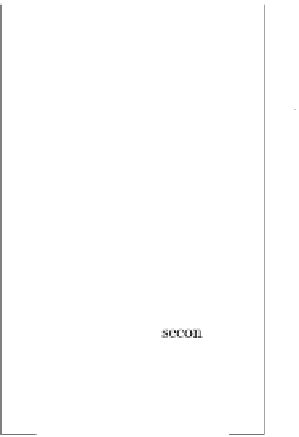Information Technology Reference
In-Depth Information
Fig. 7.7
Hierarchy of
feedback timescales. Our
actions at any point are a
cumulative consequence of
previous activity and
reflection, with such
reflection operating over a
number of temporal levels
7.3.6 Time
A defining factor of the feedback loop between human and computational partners is
the time taken for feedback to occur—that is, the period that it takes to produce and
reflect upon each new act. Generation and reflection operate in a nested hierarchy,
over multiple timescales (Fig.
7.7
), each reflecting qualitatively different parts of the
creative process.
We will briefly consider the representatives of digital technology within each of
these timescale brackets: seconds and milliseconds, hours and minutes, years and
months, centuries and decades. The boundaries of these temporal categories are not
well defined and simply depicts a continuum from short to long time scales.
Seconds
: On the micro-level, of seconds or less, an improvising musician pro-
duces sound events (notes, beats, timbres), observing their progression and relation-
ships with the macroscopic structure of the piece in general. An error may be rapidly
incorporated (“retrospectively contextualized” (Sawyer
2006
)) into a performance
and reclaimed as intentional, if the player possesses sufficient virtuosity.
15
Numerous interactive pieces of software exist with which we can improvise and
hone our skills. The likes of George Lewis'
Voyager
(Lewis
2000
), Michael Young's
aur(or)a
(
2008
), and the field of live algorithms in general (see Chap. 6 in this
volume) play the role of virtual partners, responding rapidly with semi-autonomy.
15
See Pachet's discussion of bebop sideslips (Chap. 5) for a more in-depth treatment on how in-
tentional error-like acts can be used to effectively demonstrate virtuosity.














































